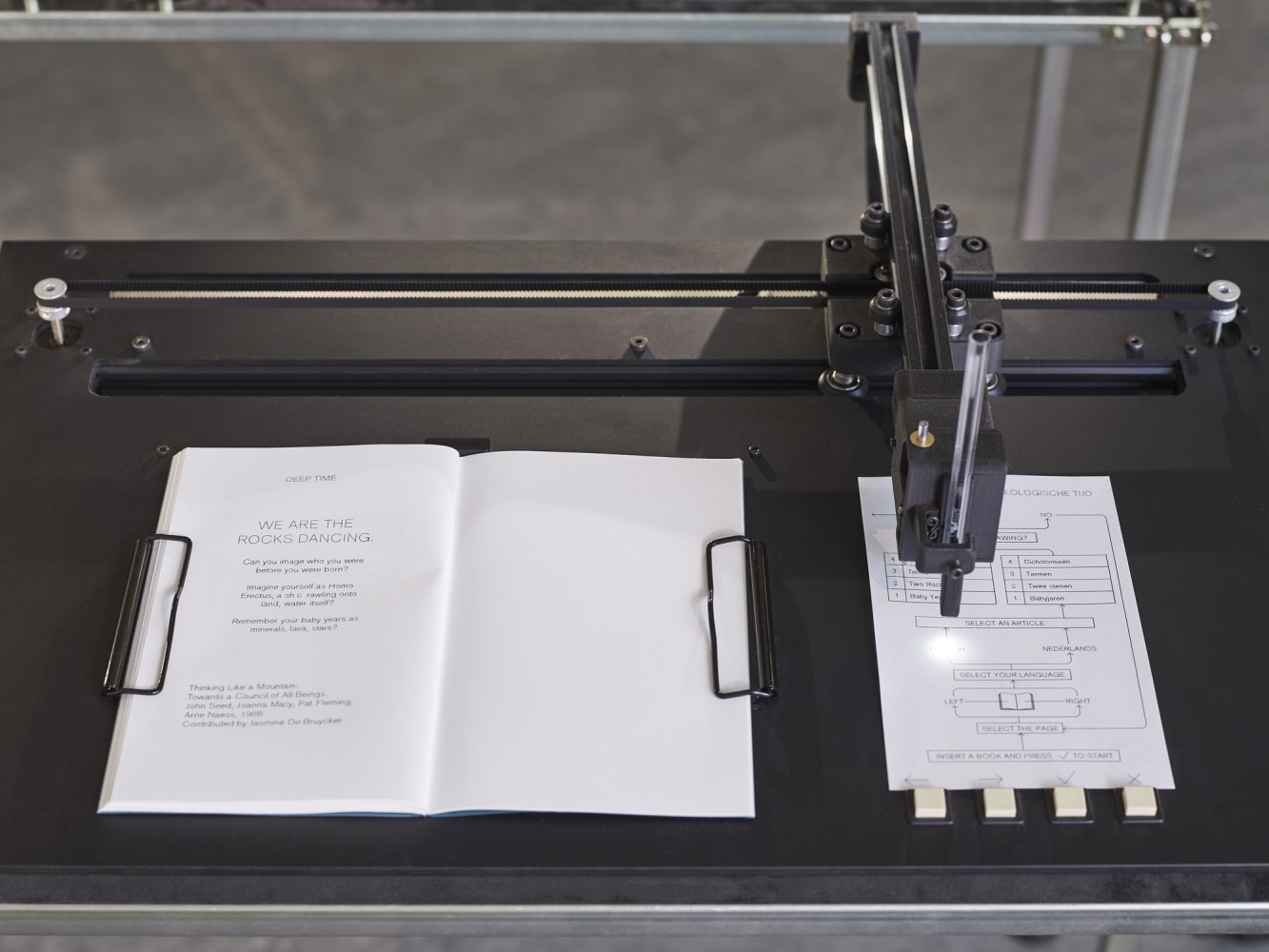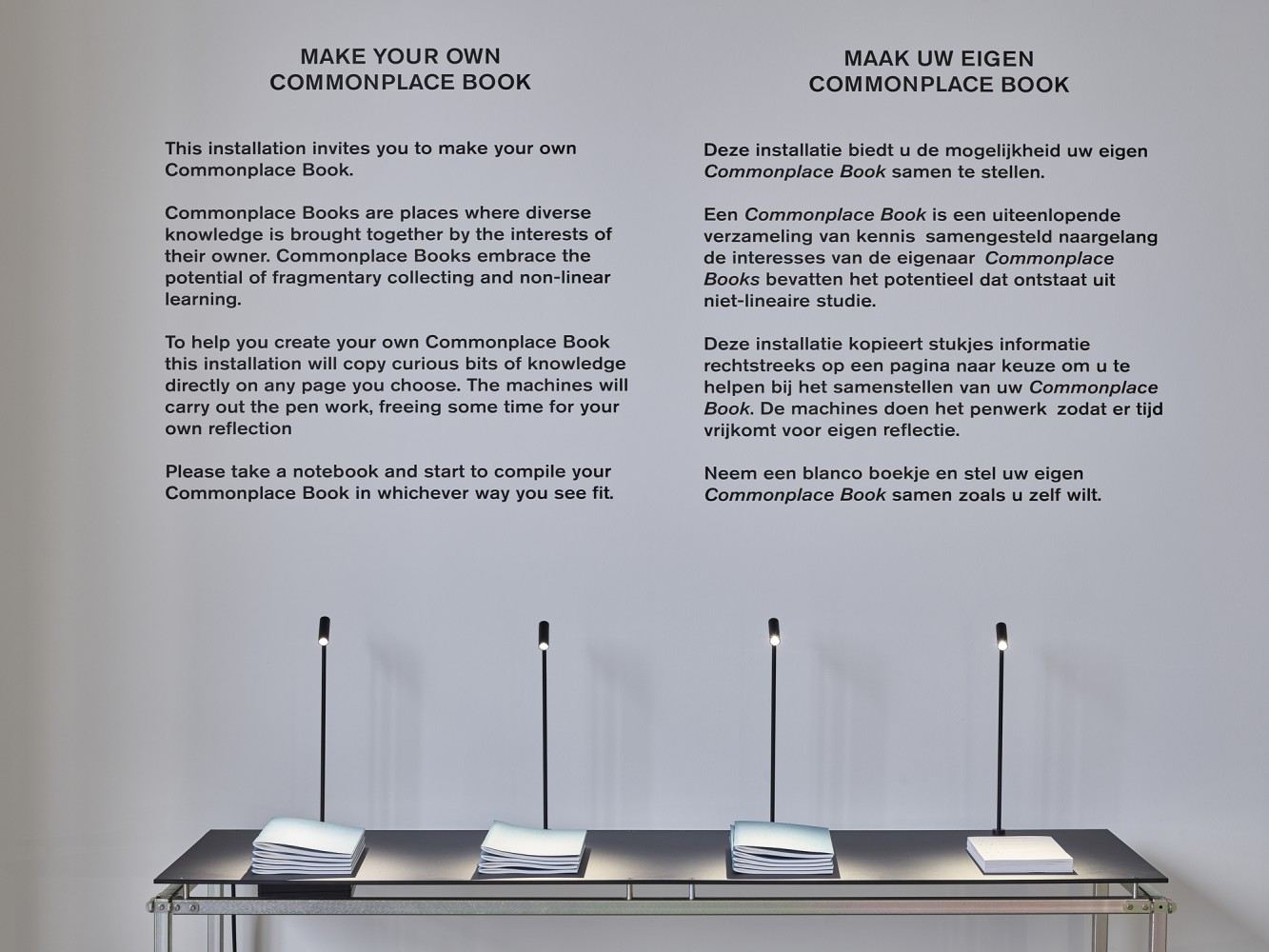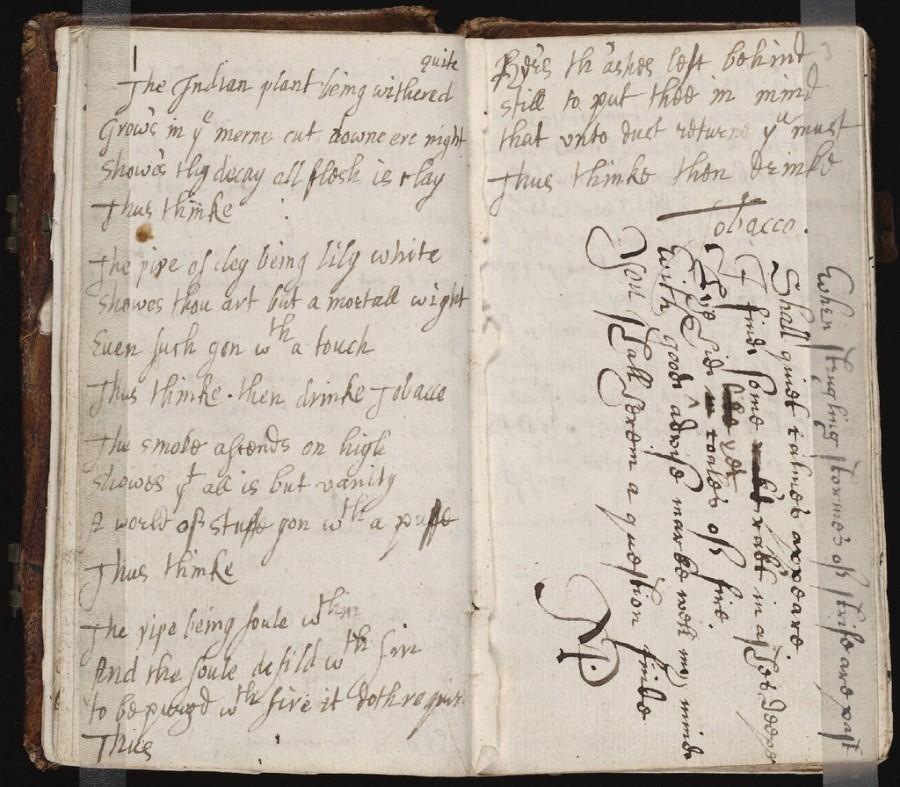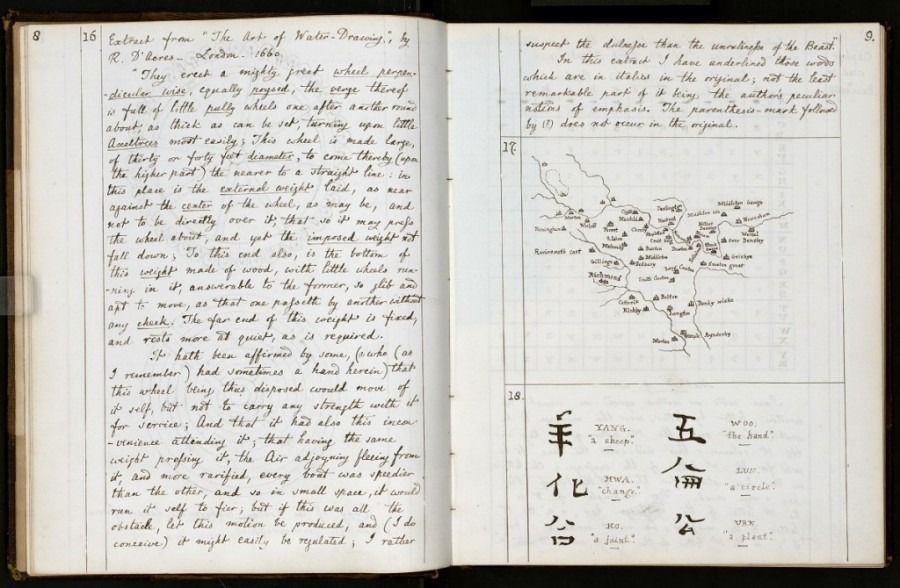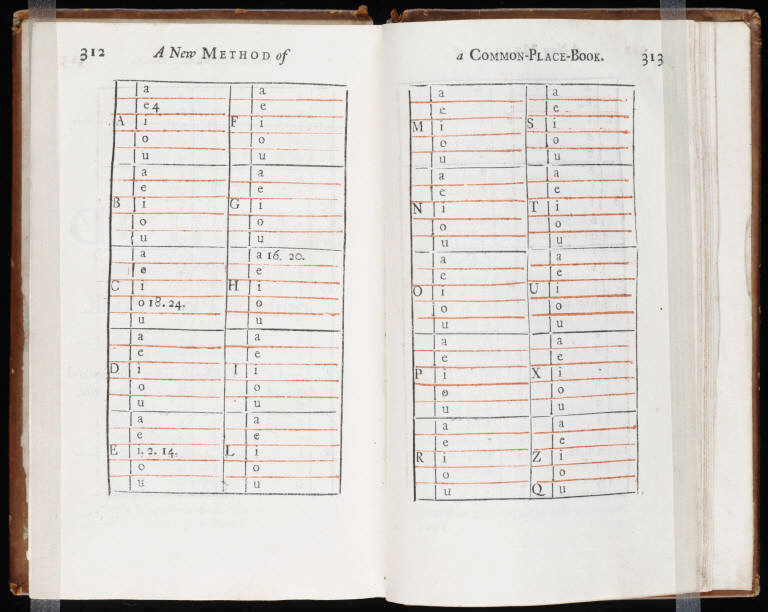4. John Locke's index
In 1706, English physician and philosopher John Locke published "A New Method of Making Common-Place-Books"
Locke began keeping commonplace books during his first year at Oxford in 1652. In the 1706 edition we find a chart printed in red and black showing how he was able to create an expandable index of topics on two pages in each commonplace book. The index contained a line for every letter of the alphabet and for each letter there were sub-divisions based on the vowels a, e, i, o, and u. He described his method as follows:
"When I meet with any thing worth putting into my Common-Place-Book, I presently look for a proper Head. Suppose for Example, the Head were Epistle; I look in the Index the First Letter which the Vowel that follows, which in this Case E I. If there is found any Number in the Space marked E I, that shows me the space designed for Words which begin with E, and whose Vowel that immediately follows is I, I must refer to the Word Epistle in the Page what I have to take notice of, I write the Head in pretty large Letters, so that the principal Word is found in the Margin, and I continue the Line in writing on what I have to remark. I constantly observe this Method, that nought but the Head appear in the Margin, and on on without carrying the Line again into the Margin. When one has thus preserv'd the margin clear, the Heads, present themselves at First Sight" (1706 edition p. 6).
Locke's method of indexing his notes was reflective of styles of reading and note-taking characteristic of his time. According to a very widely quoted passage by Robert Darnton:
“Unlike modern readers, who follow the flow of a narrative from beginning to end (unless they are digital natives and click through texts on machines), early modern Englishmen read in fits and starts and jumped from book to book. They broke texts into fragments and assembled them into new patterns by transcribing them in different sections of their notebooks. Then they reread the copies and rearranged the patterns while adding more excerpts. Reading and writing were therefore inseparable activities. They belonged to a continuous effort to make sense of things, for the world was full of signs: you could read your way through it; and by keeping an account of your readings, you made a book of your own, one stamped with your own personality. . . By selecting and arranging snippets from a limitless stock of literature, early modern Englishmen gave free play to a semi-conscious process of ordering experience. The elective affinities that bound their selection into patterns reveal an epistemology — a process of knowing — at work below the surface" (Darnton, “Extraordinary Commonplaces,” New York Review of Books 47 (20)[December 21, 2000] 82, 86).
Locke's method of indexing commonplace books remained widely used for at least one hundred years. Toward the end of the 18th century English publisher John Bell published notebooks entitled Bell’s Common-Place Book, Formed generally upon the Principles Recommended and Practised by Mr Locke.” These included eight pages of instructions on Locke’s indexing method, a system which not only made it easier to find passages, but also served the higher purpose of “facilitat[ing] reflexive thought.”
from History of Information


